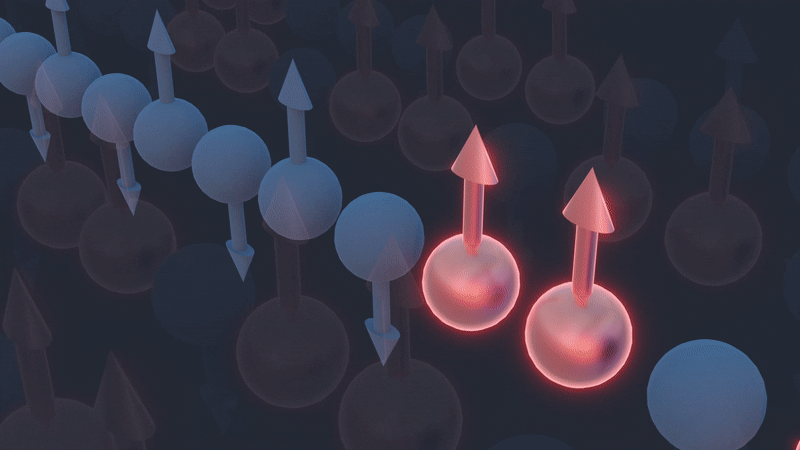March 31, 2021

Using complementary computing calculations and neutron scattering techniques, researchers from the Department of Energy’s Oak Ridge and Lawrence Berkeley national laboratories and the University of California, Berkeley, discovered the existence of an elusive type of spin dynamics in a quantum mechanical system.
The team successfully simulated and measured how magnetic particles called spins can exhibit a type of motion known as Kardar-Parisi-Zhang, or KPZ, in solid materials at various temperatures. Until now, scientists had not found evidence of this particular phenomenon outside of soft matter and other classical materials.
These findings, which were published in Nature Physics, show that the KPZ scenario accurately describes the changes in time of spin chains — linear channels of spins that interact with one another but largely ignore the surrounding environment — in certain quantum materials, confirming a previously unproven hypothesis.
“Seeing this kind of behavior was surprising, because this is one of the oldest problems in the quantum physics community, and spin chains are one of the key foundations of quantum mechanics,” said Alan Tennant, who leads a project on quantum magnets at the Quantum Science Center, or QSC, headquartered at ORNL.
Observing this unconventional behavior provided the team with insights into the nuances of fluid properties and other underlying features of quantum systems that could eventually be harnessed for various applications. A better understanding of this phenomenon could inform the improvement of heat transport capabilities using spin chains or facilitate future efforts in the field of spintronics, which saves energy and reduces noise that can disrupt quantum processes by manipulating a material’s spin instead of its charge.
Read more at ornl.gov/news.
Related Publication: Scheie, A. et. al. (2021). Detection of Kardar-Parisi-Zhang Hydrodynamics in a Quantum Heisenberg Spin-1/2 Chain. Nature Physics, 17, 726-730. doi.org/10.1038/s41567-021-01191-6